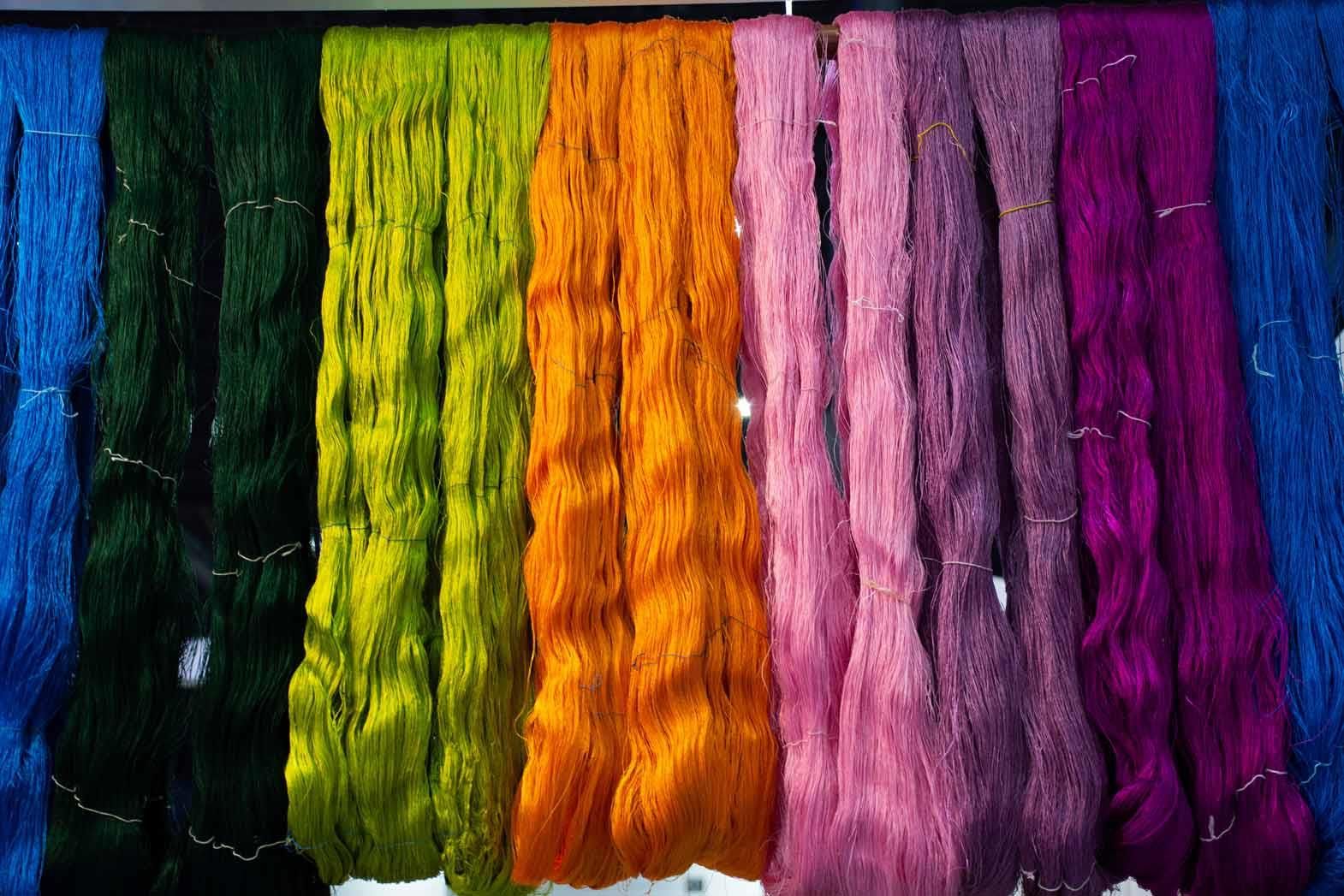By using non-eco-friendly dyes and chemicals, the environment is not only polluted but also deteriorating. This kind of harmful effect has led to the formation of stringent environmental standards in many countries around the world today. It has become imperative for every textile producer to understand the textile processes used in manufacturing textiles and the standards required for textiles to be exported to different countries.
This is because every country has different specifications and standards for different consumer textiles, such as children's wear, apparel, furnishing fabrics, and more. A dyeing process that has a minimal impact on the environment and adheres to the Eco label standard is known as Eco Dyeing. Eco dyeing methods have been utilized for centuries, and it is surprising to know that some of the natural dyes derived from roots, flowers, and plants are commonly grown in one's garden.
Silk is considered to be the queen of textiles. Until the end of the 19th century, all dyes were made using natural substances derived from plants and animals to color textiles. The pigmentary molecules present in plants, vegetables, and roots work as natural dyes. Unlike synthetic dyes, natural dyes do not depend on petrochemicals and are a renewable resource.
Restoring traditional natural dyeing methods is the best alternative in the current situation to preserve the environment. Several natural dyes are used to color silk fabric. Before dyeing silk, one needs to make sure that the silk is obtained using sustainable and eco-friendly methods; otherwise, the meaning of being eco-friendly will be lost. The dyes used for dyeing silk are low-impact dyes. This means that all the dyes used react quickly with the fabric, resulting in fast and permanent colors. Low-impact dyes have a high absorption rate, require less water in the rinse process, and release fewer dyes into the water, resulting in less impact on the environment.
There are many methods of dyeing silk, but the age-old technique for eco silk dyeing is the most natural form of dyeing. Some of the best-known natural dyes in the world include madder, brazilwood, logwood, weld, woad, cochineal, and indigo. These dye plants have been used for ages, until synthetic dyes came into existence. Yellow, orange, blue, red, green, brown, and grey colors can be produced using these natural dyes. For example, madder, brazilwood, safflower, Ladies' Bedstraw, and more are used to obtain red colors, while weld, dyer's greenweed, fustic, onion, chamomile, and others are used for yellow dyes. Indigo, woad, Japanese indigo, alkanet, and logwood are used for blue dyes.
There can be variations in the steps suggested for natural silk dyeing. It widely varies from countries to culture. Normally the silk material is soaked overnight and sometimes for several days before applying the dye. Then, the dye liquid is heated and the fabric is immersed in it for half an hour. To get a stronger shade the material is soaked overnight in the dye. The quality of water used is an important aspect of the dyeing process as it affects the dye quality. Generally gathered rain water is used.
If there is high mineral content in the water, it will act as a mordant and the color result will not be as expected. Alum is used as a mordant in the dyeing process. Plant dyes avoid using toxic and polluting chemicals. Therefore, the remains from the dyeing process can be used as manure.
GOTS (Global Organic Textile Standard) is well-known for its stringent textile processing standards in the world. A natural dyeing method approved by GOTS, also known as vegetable or herbal dyeing is utilized in India. It uses flowers, roots and fruits like turmeric, onion, myraballams, kesu flowers, dhavado flowers, indigo, etc.
This technique is not new and has been used for dyeing in ancient India.
It prevents water pollution as it replaces petrochemical dyes with vegetable dyes. Also, the cloth has high medicinal value as many herbs are used for dyeing. A research was conducted on Parijataka dye obtained from orange corolla tube of parijataka flowers for their dyeing ability on silk with different mordants. Eco-friendly mordants such as tin(II) chloride, copper(II) sulfate, pomegranate, tannin, alum and lime juice were used.
It was found that among various techniques tested, simultaneous mordanting method was best for dyeing parijataka on silk. Furthermore, the study showed that the dyeing ability was more with lime juice mordanted silk fabric, whereas color fastness and wash fastness was especially good when SnCl2, alum and lime juice mordanted fabrics were used.
Mud silk is a very eco-friendly fabric due to the manner it is finished. The dyeing process of this fabric is very unique and sustainable. Once the silk has reached the finishing process, it is dyed using roots, grass or berry juices depending on the required color. For eg. if brown dye is required, the roots are used.
Then, it is washed many times with mud which contains iron. This process takes 4 weeks to complete. Later, the fabric is laid on the ground, where the rays of the sun and the moon fall on both sides of the fabric, known as double side dyeing process.
Eco silk dyeing requires no chemicals at any stages of the dyeing process. Hence, the quality of the fabric and the dye can be trusted upon with respect to health and environment. Eco-dyeing process preserves environment without any water contamination, no pollution, no toxic release and no harm to the environment. All it gives is simple and beautiful colors to the most elegant fabric - silk.
References:
1. Beautifulsilks.com
2. Telio.com
3. Herbalfab.com
4. Wildcolours.co.uk








Comments